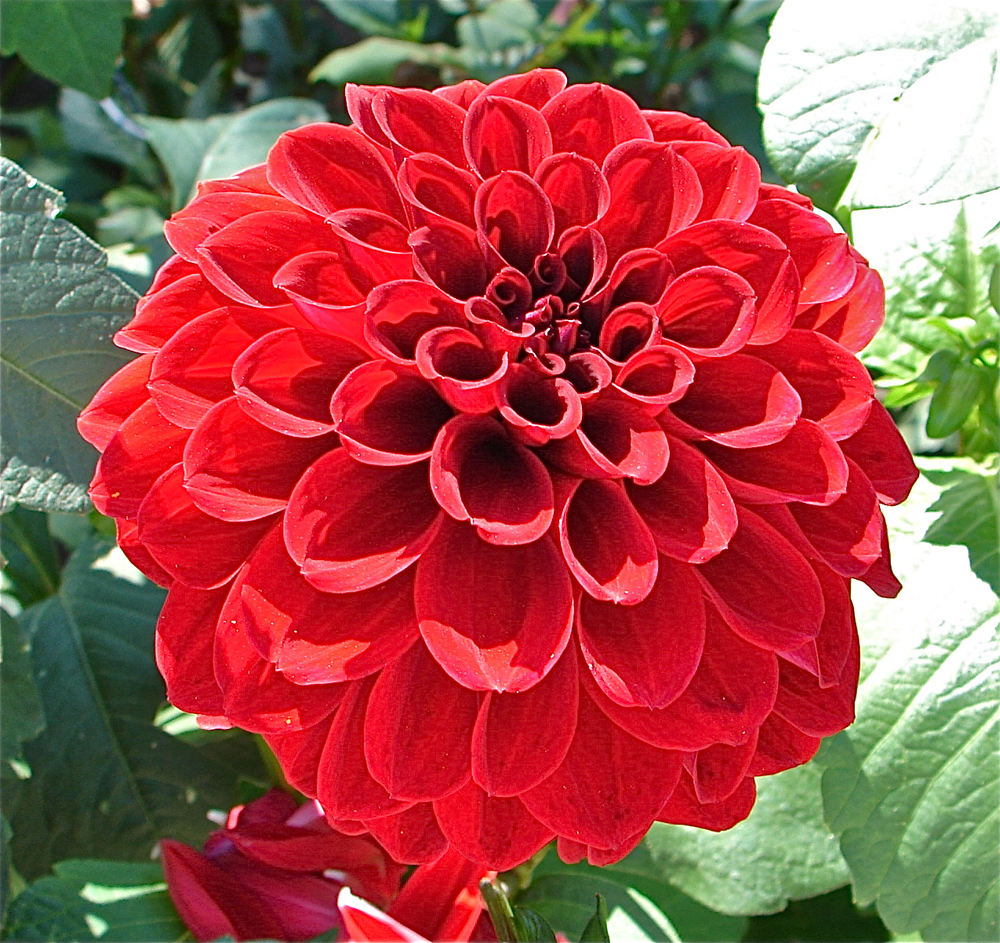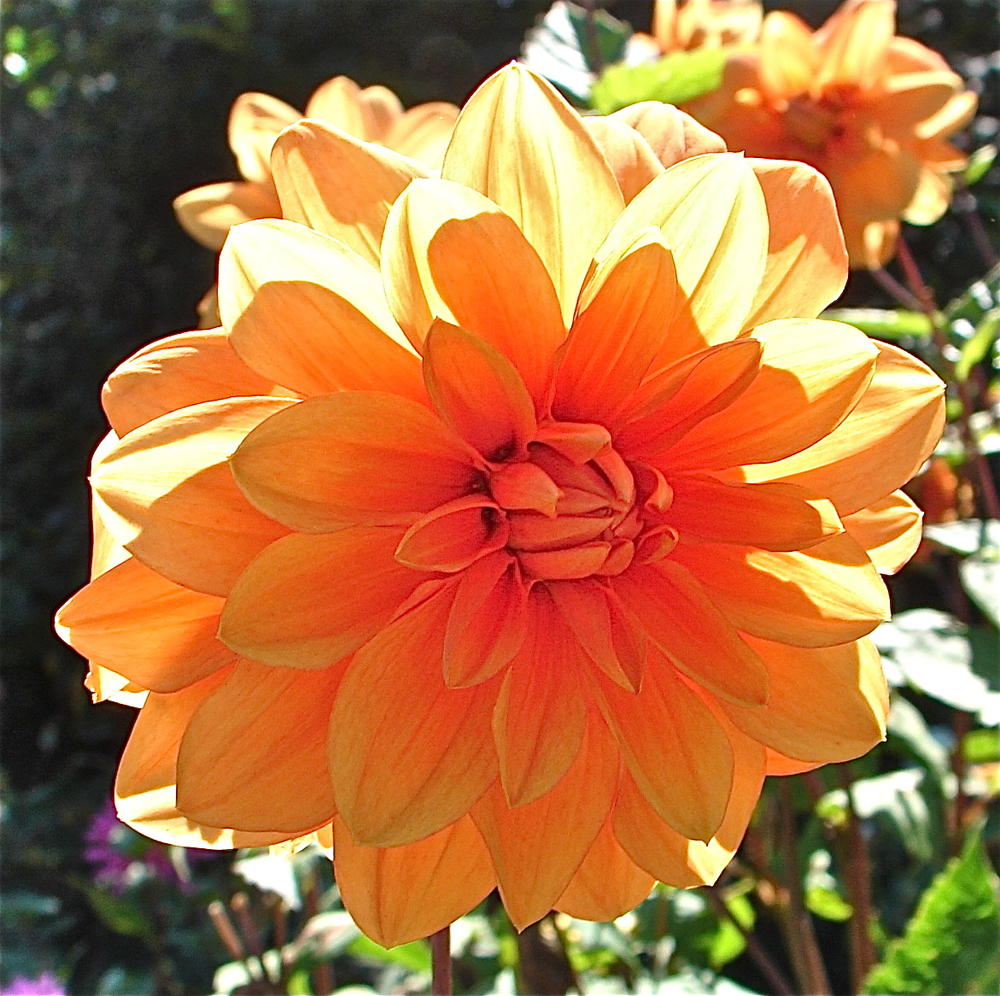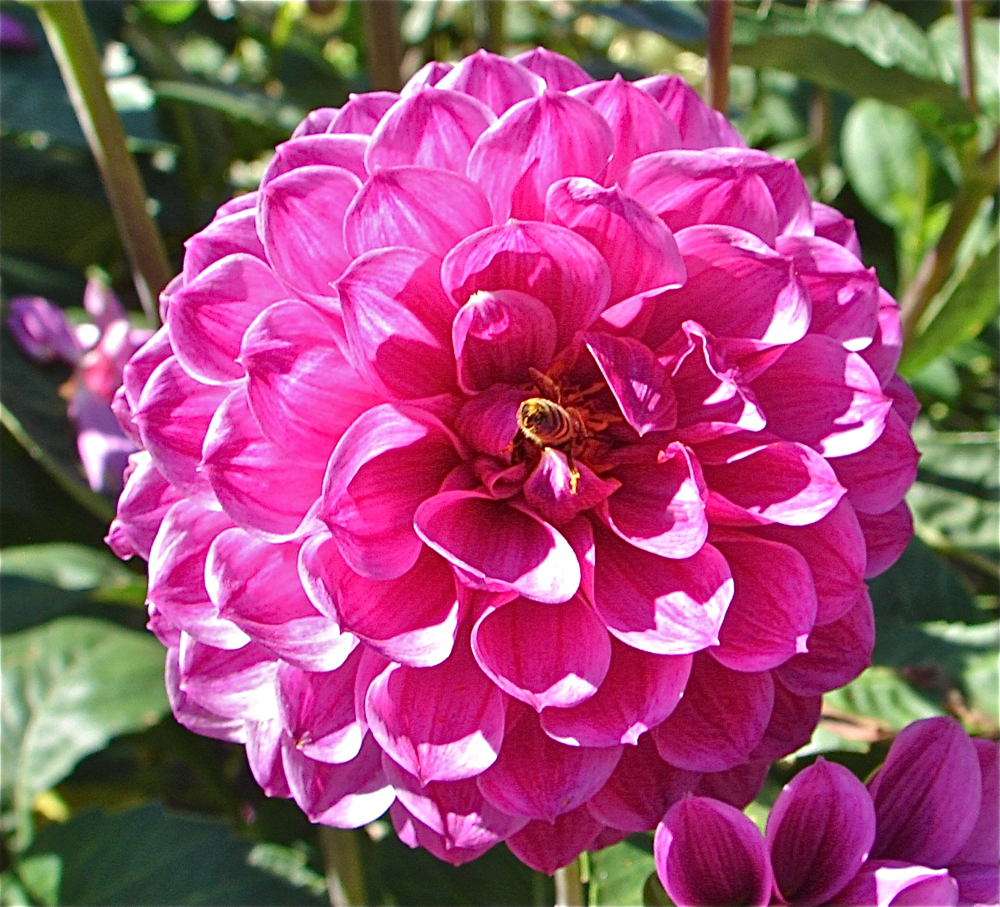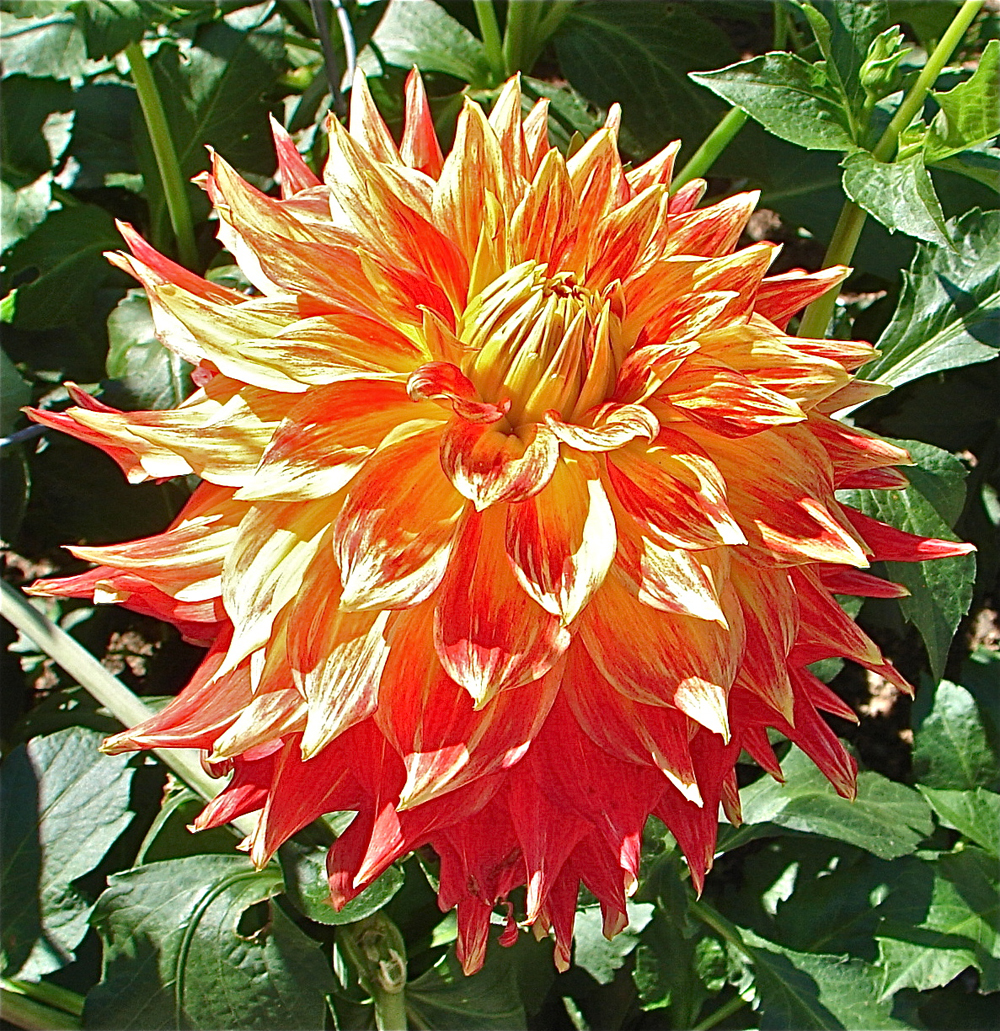Blooming Plants: Spectacular Photos of Dahlias
Striking blooms

The dahlia is one of the most spectacular of blooming plants now found in gardens across the world. These herbaceous perennial plants belong to the genus Dahlia and are indigenous to the highlands of Central America and Mexico. They are a bushy, tuberous plant that originally only consisted of some 35 wild species. Today over 50,000 hybridized varieties of dahlias have been registered and classified. The hybrid Eveline is shown here.
Stars on Earth

Dahlias belong to the Asteraceae family making them closely related to daisies, zinnias, asters, chrysanthemums and sunflowers. Members of this magnificent family of flowers all tend to produce "star" shaped blooms. A capitulum, or floral head, is also a characteristic of this family. Each capitulum is composed of a number of small, individual flowers known as florets. There are two types of florets — the disk florets that make up the center of the dahlia flower and the ray florets that make up the showy, "petals" of the dahlia flower. A Sea Dahlia is shown here.
A humble beginning

Dahlias most often are grown from large, sweet-potato-like tubers which grow in clusters that have the appearance of a group of brown carrots. The indigenous peoples of the New World would use these tubers as a source of food and medicine. The tubers grow well in all types of climates and soil conditions as long as the temperature stays above freezing. Dahlias, with their magnificent blooms, grow best in rich soil with good drainage. It is possible to grow dahlias from seeds but it is much easier to sprout them from their fibrous tubers.
A multipurpose plant

When the army of Spanish Conquistador Hernan Cortes entered Tenochtitlan, in the fall of 1519, the Mexica people had been using these wild flowers of their mountainous region for food, medicine and ceremony. In 1552 a student in one of Spanish operated school wrote a booklet detailing the native botanical plants and their uses. It became known as the Badianus Manuscript and it is the first written document detailing the medicinal plants of the New World. Scholars believe that one such manuscript entry and drawing is of a species known today as Dahlia coccinea, one of the three, native species of wild Mexican dahlias first discovered and classified. Shown here is the beautiful pink hybrid dahlia known as Betty Anne.
A long history

In 1570 Francisco Hernandez was sent by the King of Spain to Mexico to study the flora, fauna and natural resources of the country. Over a 7-year expedition, Hernandez and his associates listed plants whose descriptions resembled dahlias with the names Acocotli and Cocoxochitl. Drawing of these dahlias were made but not published until 1651. The beautiful hybrid dahlia shown here is known as Ali Oop.
The namesake

Dahlias appeared again in Spanish history when in 1789 the botanist overseeing the Botanical Garden of Mexico City collected and sent several crates of Mexican plant species to the director of the Royal Gardens of Madrid, Antonio Jose Cavanilles. For the first time, Cavanilles was able to sprout and bring to flower three species of dahlias on the continent of Europe — Dahlia rosea, Dahlia pinnata and Dahlia coccinea. Cavanilles also now suggested the name Dahlia for the genus of these flowering plants in honor of the recently deceased Swedish botanist, Andreas Dahl. The hybrid Vista Lindsay is shown here.
The spread of the plant

By 1800 Cavanilles began to send seeds and tubers from his three varieties of dahlias to botanists across Europe. The plants proved to be easy to grow and even easier to hybridize. Throughout the next two centuries thousands of hybrid forms of dahlias were developed. By 1936 14,000 cultivars of dahlias were recognized by botanists. Today the number of cultivars is close to 50,000. The hybrid Lady Liberty is shown here.
Get the world’s most fascinating discoveries delivered straight to your inbox.
Vividly descriptive names

With so many types of dahlias now being grown, classification of all the varieties has become extensive. There are some 20 descriptive classes of dahlias now recognized by the American Dahlia Society. Descriptive class names include Anemone-flowered, Pompon, Single, Ball, Straight Cactus, Semi-Cactus, Water Lily and more. A semi-cactus dahlia AC CJ is shown here.
Colors galore

One of the great appeals of dahlias is the wide variation of colors found in their blooms. Dahlias come in almost every color except black and blue. Multiple hues of reds, purples, oranges, yellows, pinks and whites now grace gardens and landscapes around the world. The bright orange dahlia hybrid Maarn is shown here.
All shapes and sizes

Dahlia blooms range in size from over 10 inches in diameter and known as "Giants" to "Miniature Ball" blooms with a diameter of only 2 inches. Dahlias also have one of the longest blooming seasons of any garden flower, keeping a garden vibrant and beautiful long after other flowers have wilted and died. Cut dahlias are great flowers for floral arrangements as they stay freshly blooming long after their stems have been cut. The brilliant pink hybrid Brian R is shown here along with a visiting bee.
A beautiful, easy addition

Because of their ease to grow dahlias are found today in gardens across the world. Their great varieties of shapes, colors and sizes and their long growing season make these New World flowers a favorite whenever and wherever they are found. The City of San Francisco, CA designated the dahlia as its official flower on October 4, 1926. Mexico, a country with over 30,000 native flowering plants, chose the simple Dahlia pinnata as its national flower in 1963. And in the Netherlands, the Dutch dahlia trade is worth over $50 million annually, second only to the Dutch tulip industry. Not a bad story for the humble flowers that once only graced the Valley of Mexico and the mountains of Central America. The hybrid CG Sparkle is shown here.
 Live Science Plus
Live Science Plus





